Italian flowers are numerous and they even include roses, lilies, and many species of orchids are some of the most delightful plants common in ornamental gardens.
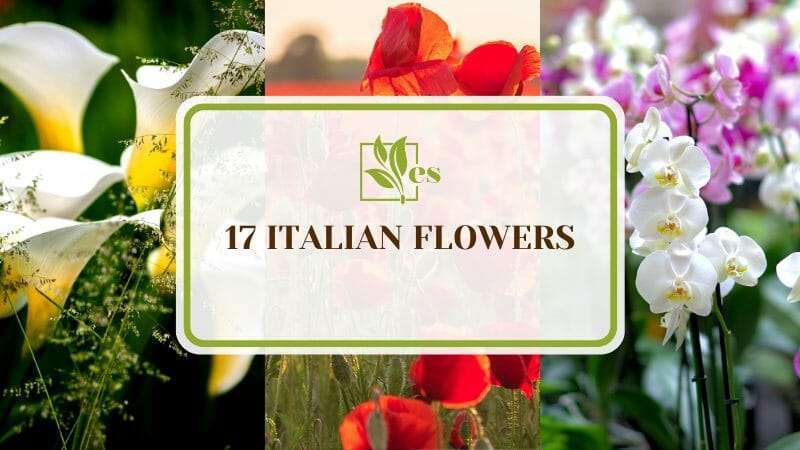
These flowers are not just beautiful, they are also easy to grow. Read this article to learn about some beautiful flowers in Italian soil.
JUMP TO TOPIC
List of Italian Flowers
Below is the list of the beautiful flowers that originate from Italy:
1. Lilies
Lilies are herbaceous flowering plants in the genus “Lilium.” They are culturally significant and also found in a lot of literature worldwide. Lilies signify refined beauty and purity in Italy while the lily plants producing white flowers signify the Virgin Mary in the context of Christianity. Beautiful lilies are traditional Italian flowers and happen to be the national flowers of Italy.
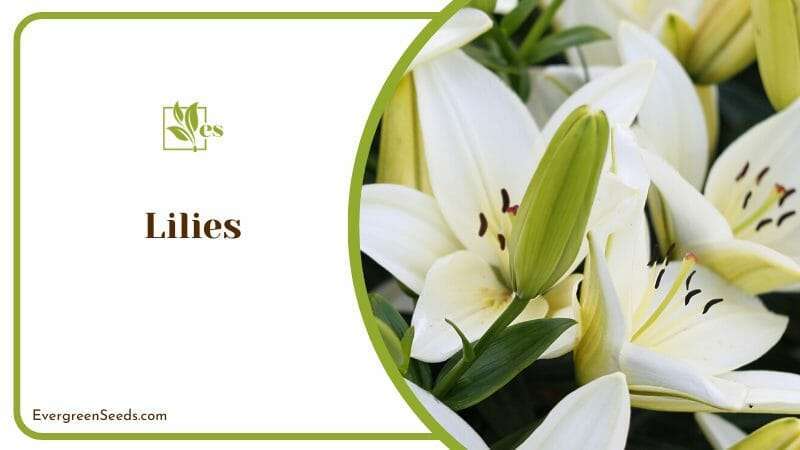
These beautiful flowers grow from bulbs (roots resembling tubers) and are perennial as long as the temperature is just right. Lilies can grow tall and reach a height of two to six feet if only the growing conditions are met.
Their flowers are often fragrant, large, and can come in colors such as yellow, white, red, orange, purple (check out the 18 most popular purple lilies), and pink. They usually produce flowers starting from late spring to summer and sometimes reaching mid-fall.
The natural habitats of lilies are woodland habitats, especially montane ecosystems in Europe and Asia. If you want to grow lilies, you should prevent caterpillars, deer, and other pests from reaching them as they are highly susceptible to pest attack. You can make use of a fence in your garden to prevent deer.
2. Orchids
Orchids are one of the prettiest and most graceful flowers in Italy. These flowers are characterized by the labellum or lips in their flowers.
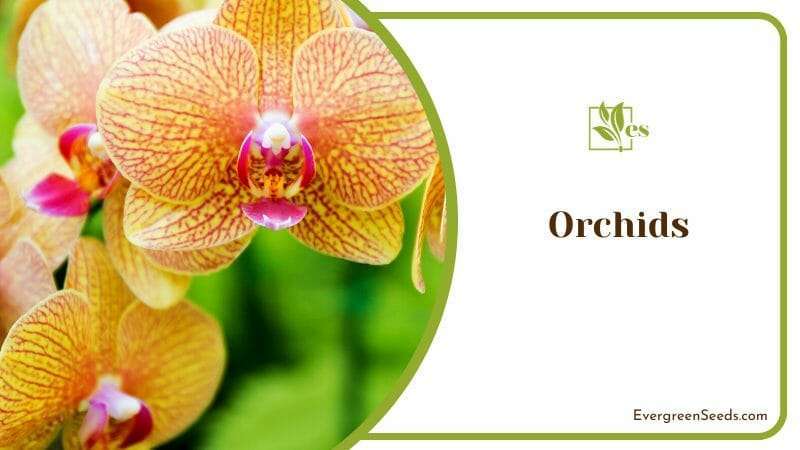
The lip is usually a modified petal that has a different shape and sometimes colors from the other petals. They produce fragrant flowers that have a nice smell that’s a little light. Depending on the variety, orchids can be erect or crawling.
The leaf formation and floral design of orchids depend on the species and variety, but you can surely identify an orchid when you see it by the beauty of the lip on its flower. They usually produce tubers and are perennial as long as you are growing them in their preferred environment.
Some types of orchids such as the lady slipper orchid, Dracula orchids, phalaenopsis gigantea, and fly orchids which are found in Italy are facing extinction due to habitat loss, so there are laws that protect them from being collected unsustainably. If you’d love to plant some orchids, you need a very loose substrate and a richly humid environment.
3. Peonies
Peonies are plants in the genus “Paeonia,” which is the only genus existing in the “Paeoniaceae” family. These plants originate from Europe, Asia, and Western North America with just 33 known species.
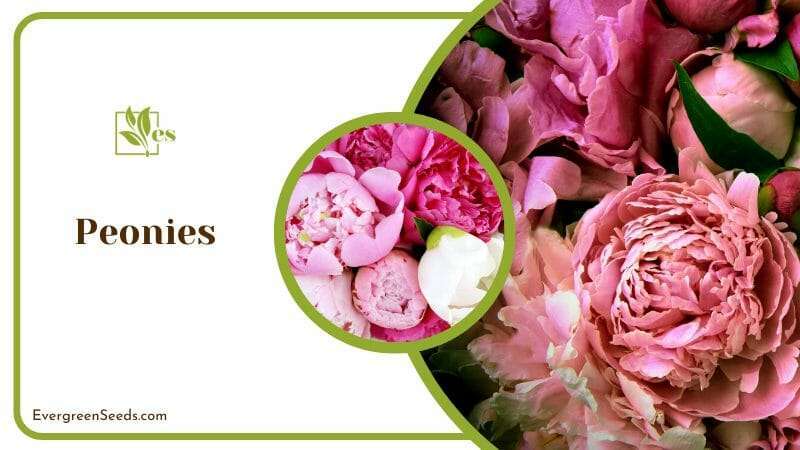
They have a wide variation when it comes to their colors and they signify love in many places including Italy because they can serve as cut flowers. You can also grow them as ornamental flowers or for making tea.
Peony plants can grow to reach one to three feet tall, producing deeply lobed, compound leaves and often fragrant, large flowers. The flowers can have colors such as pink, purple, red, yellow, or white according to the variety.
Peonies are the type of flower that bloom in late spring or early summer and the bloom ends in late summer, though you can deadhead the spent flowers to extend the bloom time.
If you want to grow peonies, you must make sure that the soil is well-drained and never waterlogged. Also, grow them in above-average humidity, exposing them to six or more hours of sunlight daily.
4. Poppies
Poppies are the flowering plants in the subfamily “Papaveroideae” which is in the family “Papaveraceae.” They are mostly used as cut flowers and are a symbol of the remembrance of the soldiers who died in battle.
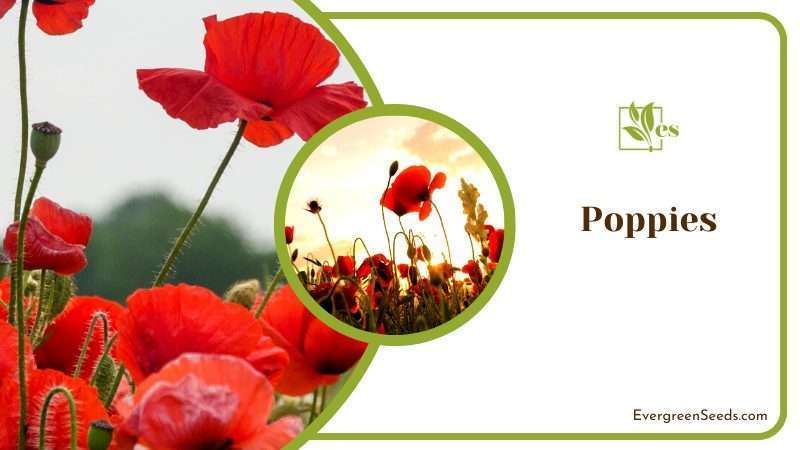
In the past, people dropped poppy flowers on the graves of soldiers and they served as Italian flowers for funerals. These flowers also represent sleep, peace, and death according to the region.
Some poppy plants are monocarpic which means that they only flower once before they die. Their flowers have either four or six petals, overall it has to be an all-even number and can come in a wide variety of colors according to the range. The plants have dissected or lobed leaves and produce milky saps.
To grow these beautiful flowers, you need moist but well-drained soil and access to full sun. The area should be weed-free and the temperature should be 60-68 degrees Fahrenheit. You can deadhead the flowers to increase the bloom time, however, if you want to pollinate them, the plants should be easily reached by bees and other pollinating insects.
5. Bougainvilleas
“Bougainvillea” is a genus of ornamental thorny bushes, vines, and trees in the family of four o’clock plants, “Nyctaginaceae.” These plants originate from the eastern regions of South America; however, they have naturalized in Italy to become Italian plants. According to the author, there can be four to 22 species of plants in the genus. The plants can be evergreen or deciduous according to the amount of rainfall.

These beautiful plants can grow to reach from three up to 39 feet tall and can add six feet in just one season. The leaves are simple ovate-acuminate, alternate, and can reach 1.5 to five inches long and two to three inches wide. The flowers are white but are surrounded by bracts that can be magenta pink, red, purple, white, orange, or yellow.
If you want to grow these plants, grow them at 45-80 degrees Fahrenheit. Also, cut off a third of their height in early spring so that they do not overgrow in the rest of the year.
6. Roses
Roses are indeed the most popular and beautiful type of flowers in the world. Rose plants are woody perennial plants in the genus “Rosa” from the family “Rosaceae.” There are over three hundred rose species in Italy, in addition to thousands of rose cultivars.
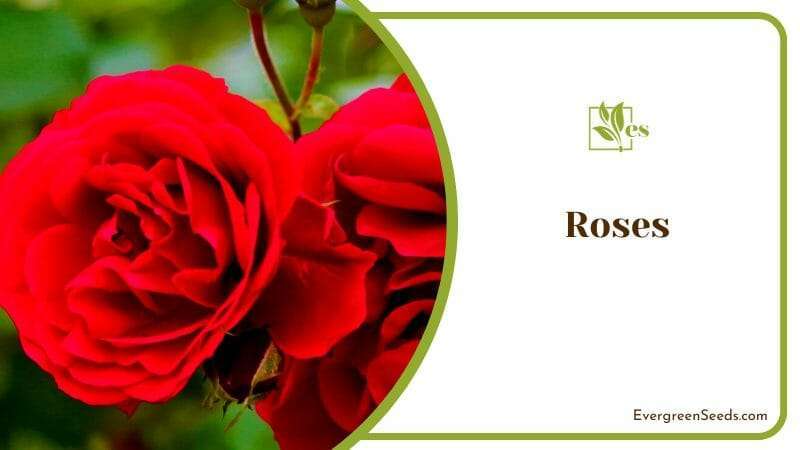
Depending on the species, roses can be climbing, erect, or trailing shrubs. The rose plants are best recognized by their thorny stems and their gracefully wrapped petals.
The leaves of roses are pinnately compound, just like the feather of a bird, and alternate, usually having sharply toothed oval-shaped leaflets. Rose flowers can be red, white, and yellow. They also come in other colors according to the variety, such as the Kordana rose which is a mini red rose. Rose flowers are fragrant as they have a very sweet smell.
You may grow your roses as ornamental or landscape plants, just make sure that you amend the soil with coffee grounds or other sources of organic nitrogen. Nonetheless, if you like, you can water them with nutrients. Make sure that you plant your roses in porous soil and protect them from pests such as arachnids, insects, and fungi.
7. Sunflowers
Sunflowers are large, annual, beautiful flowers from the genus “Helianthus.” While they serve as ornamental flowers, people around the world, especially in America and Europe grow them for their edible seeds and oil.
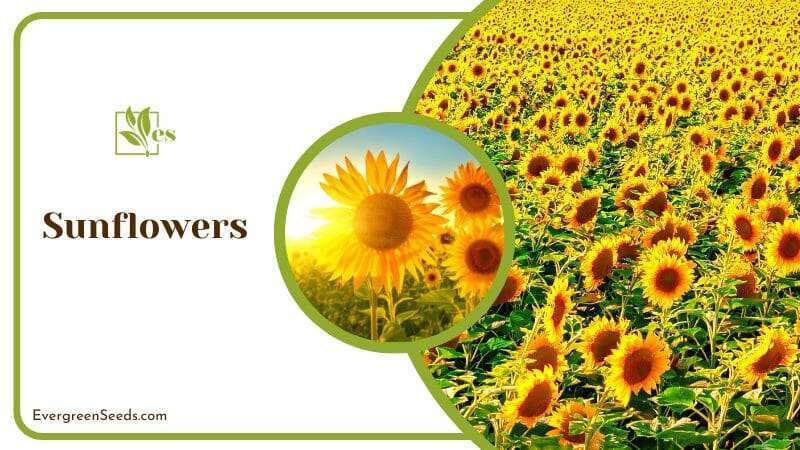
They also serve as food for wild birds and as livestock. Sunflowers were first domesticated and cultivated in America, but later spread to Europe as early as the 16th century.
The genus name “Helianthus” derives from two Greek words; “Helios” meaning sun and “anthos” meaning “flower.” This genus with over 150 species has plants that can reach from three to 15 feet tall. While the wild sunflower plants have two or more flower heads, the popular domestic ones only have a single stem with a single flower.
The plant leaves are coarsely toothed, broad, rough, and usually alternate while the bottom leaves are somewhat heart-shaped. The plants bloom from June to September. To grow sunflowers, ensure that they get six to eight hours of sun daily and are growing in fertile, moist, and well-drained soil with nutrient-rich mulch.
8. Crocuses
“Crocus” is a genus of perennial, flowering plants in the family “Iridaceae.” There exceed more than 100 species in the genus and they are characterized by growing corms and underground flower stems.
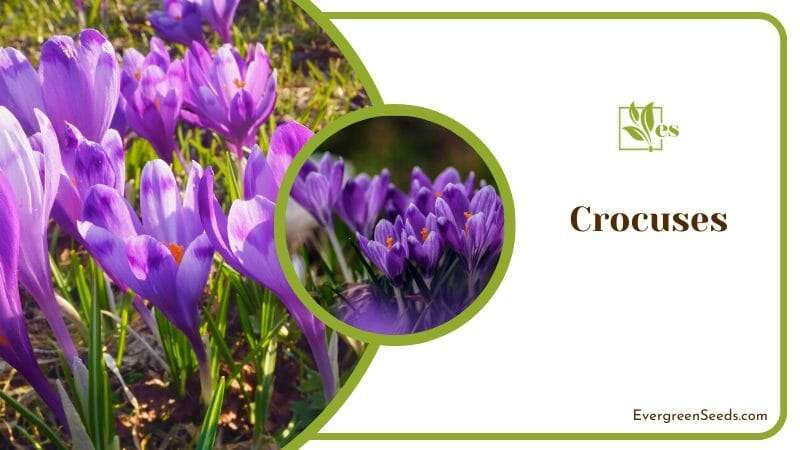
They originate from Europe and the Middle East, growing naturally in scrubs, woodlands, and meadows from alpine tundra to sea level. The bulbs, seeds, flowers, and leaves of this ornamental plant are used for medicine.
Their flowers are relatively large and can be orange, white, purple, or yellow and they become dormant after flowering. The flowers have a gynoecium bearing three united carpels and three stamens, the roots dig eight inches into the soil, and the boat-shaped leaves can grow to reach four to five inches tall.
Crocuses are used to make saffron spices. To grow these plants, you should feed them with a balanced fertilizer in loose soil. While they have a lot of uses, they may be difficult to remove if they are growing as weeds. To remove them continually cut off or dig out their corms which are like tubers. Note that they are toxic and you should handle them with care.
9. Chrysanthemums
The genus “Chrysanthemum” refers to plants that are sometimes called chrysanths or mums in the family “Asteraceae.” These beautiful flowers are native to East Asia and northern parts of Europe.
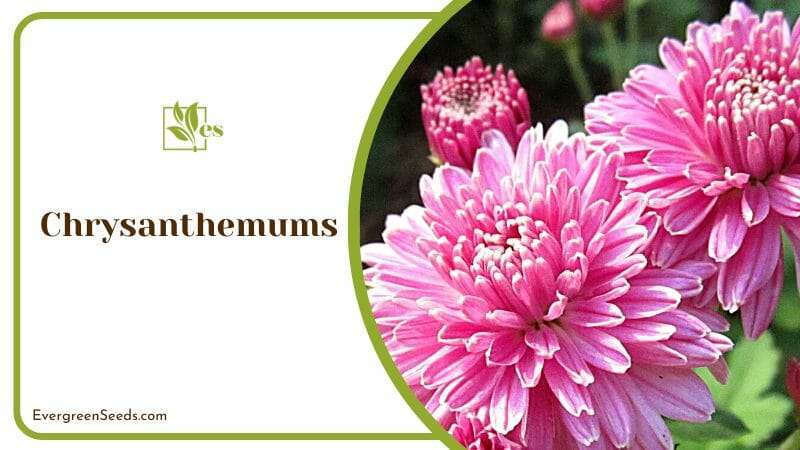
While people mostly grow mums for ornamental purposes, they also make great tea, and insecticidal products, and help to reduce toxic gases in the air as they absorb a lot of gases.
These plants are perennial and herbaceous, having alternate leaves that are divided into leaflets. The leaves may be lobed, pinnatisect, or serrated.
The compound inflorescence of chrysanthemum plants is a collection of many flower heads. However, it is sometimes a solitary head. The ray florets of the flower can be white, red, or yellow. The disc florets of the flower are usually yellow.
Chrysanthemum plants are easily propagated by dividing their roots or cutting their stems in early spring. Ensure that you grow them in a new substrate so that you do not expose the young plants to disease. If you notice that their leaves are switching their colors to yellow, check the drainage of the substrate. To collect cut flowers, take only four to six inches of the stalk.
10. Carnations
Dianthus caryophyllus or Carnation plants are herbaceous, perennial plants that are native to the Mediterranean regions which include Italy, Spain, Albania, Greece, Croatia, and Turkey. They have a lot of uses, but the most common are their use in making vinegar, boutonnières, beer, sauces, wine, and salads. They bloom, releasing flowers with a spicy smell in late spring, usually in May.
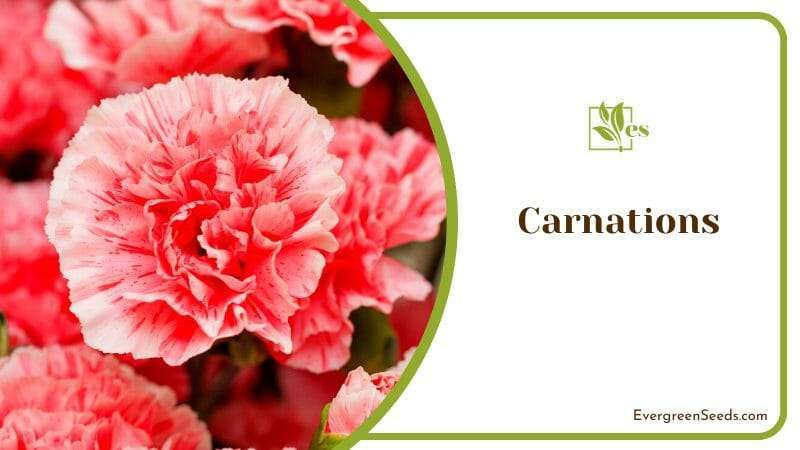
These beautiful plants can grow to reach 31 inches tall, producing glaucous leaves that are greyish green to blue-green. The leaves are slender and can grow to reach 16 inches in height. They produce hermaphrodite flowers that are bright pinkish-purple. However, their cultivars come in other colors such as yellow, red, green, white, and blue.
Just in case you want your carnation plants to bloom for a longer time, you can deadhead the flowers, cutting off the spent ones so that the plants will produce more. Ensure that the plants receive four to six hours of light every day and grow in a substrate with a pH of 6.7 to 6.9.
11. Jasmines
“Jasmine” refers to plants in the genus of vines and shrubs in the same family as olives. There are around 200 species of Jasmines and they are native to the warm temperate and tropical regions of Eurasia, Oceania, and Africa. These plants produce a bloom with a sweet, rich, fruity, and sensual fragrance. They can be used to make cosmetic products to hydrate human skin.
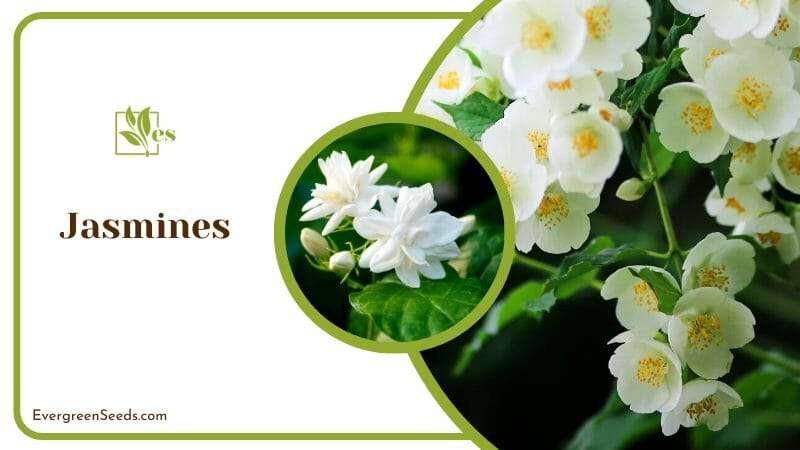
According to the species, jasmines can either be deciduous or evergreen. They grow leaves in alternating or opposing arrangements and have a simple, pinnate, or trifoliate formation. Their flowers are white, slightly reddish rare, or yellow, growing to reach 0.98 inches in diameter. The flowers have four to nine petals, one to four ovules, and two locules.
If you wish to grow jasmines, grow them in a mixture of sandy and loamy soils. Also, if you are growing the crawling species, you need to get a trellis, fence, or any growth support so that they can climb and grow tall. You can also deadhead the spent jasmine flowers to increase the bloom duration of the plant.
12. Cyclamen
Cyclamen is a genus with 23 species of perennial plants that are native to the Mediterranean Basin and Europe. Their roots grow from a tuber and in their natural habitats, their leaves start growing in autumn through the cold winter and then fall or die in spring. Then, the plant will go dormant throughout the hot and dry summer of the Mediterranean.
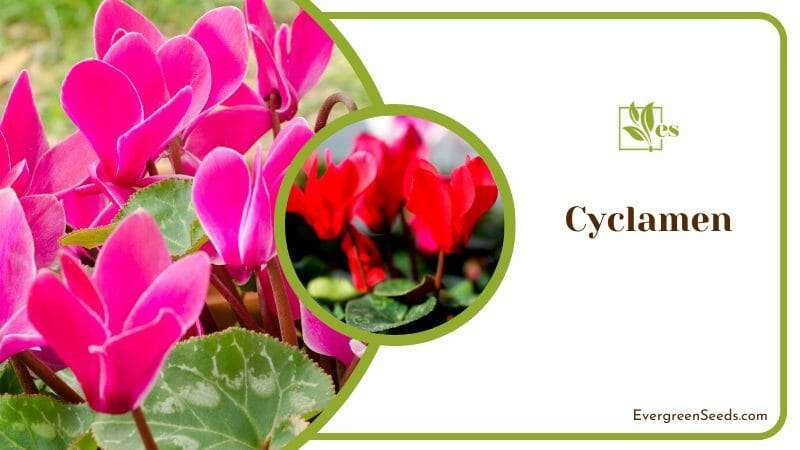
The leaves of these plants are variegated and can come in several shades of silver and green. The color design can either be a Christmas tree shape or an irregular pattern of arrowheads or blotches.
The plants produce flowers with five petals that bend up or outwards, sometimes twisted. The petals are connected at their base to form a cup and there are five sepals growing just behind the cup.
If you want to grow Cyclamen plants, grow them at 60 to 65 degrees Fahrenheit and make surer that the temperature is at around 50 degrees Fahrenheit at night. The soil should be moist, but almost dry before you water the plant.
Grow your Cyclamen plants in the east, south, or west-facing parts of your home or garden so that they would receive as much sunlight as they need and not too much.
13. Periwinkles
Periwinkles are plants in the genus “Vinca” and family “Apocynaceae.” These perennial plants are native to Europe, southwest Asia, and northwest Africa. Note that they are perennial if they are winterized or when they grow in warmer climes. However, they grow as annual plants in cooler climes. They can also be evergreen or deciduous according to the species and region
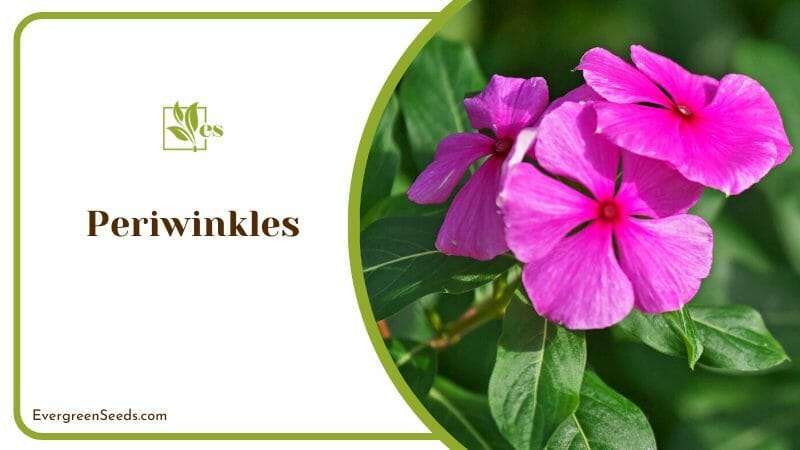
The flowers of periwinkles are blue, purple, or white and bloom in March or April. Sometimes, they bloom again in the fall. Periwinkles can grow about 3.3-6.6 feet tall, spreading in every direction by sending trailing and rooting shoots, from which new plants can grow. Their stems can take root in any part they have contact with the ground. Their flowers are salverform, growing 0.98 to 2.76 inches wide.
Their flowers have five petals that are usually violet (sometimes white) and joined together at their base to form a long or short tube.
Their leaves arrange from ovate to opposite, are simple broad lanceolate, and grow 0.5 to 3.5 inches tall and 0.20 to 2.36 inches wide. Nonetheless, note that you can winterize them by covering them with a thick layer of mulch if you want them to survive the winter.
14. Bluebells
Bluebells, with the scientific name “Hyacinthoides non-scripta,” are beautiful plants native to the British Isles and north-western. However, they have naturalized in other places including Italy and Turkey.
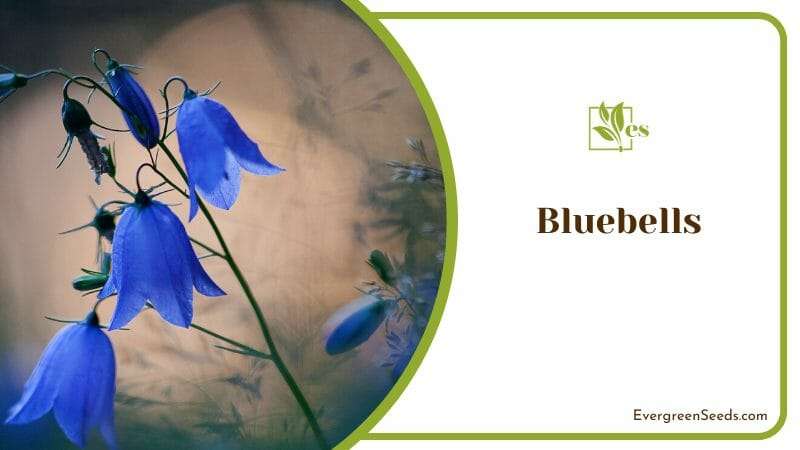
They are naturally found in the shady parts of hedgerows, woodlands, and grasslands. People usually grow them as garden plants because of their beautiful flowers and colors.
The three to six feet-long leaves of bluebells are strap-shaped, hairless, and smooth, having pointed tips. Their violet-blue flowers are bell-shaped and have six petals with an up-turned tip. There are five to twelve sweet-smelling flowers drooping to one side on the stalk.
The bloom of bluebells starts around March or May. To grow these plants, ensure that the soil is enriched with phosphorus and keep the plant in a place with indirect light and high humidity.
15. Mimosas
This is one of the fastest-moving plants on the planet. “Mimosa” is a genus with around 590 species of shrubs and herbs in the family “Fabaceae” in other words, from the legume family. In places including Italy, the plants signify secrecy because they can close their leaves when touched. A popular example of a plant in the genus is the touch-me-not plant.
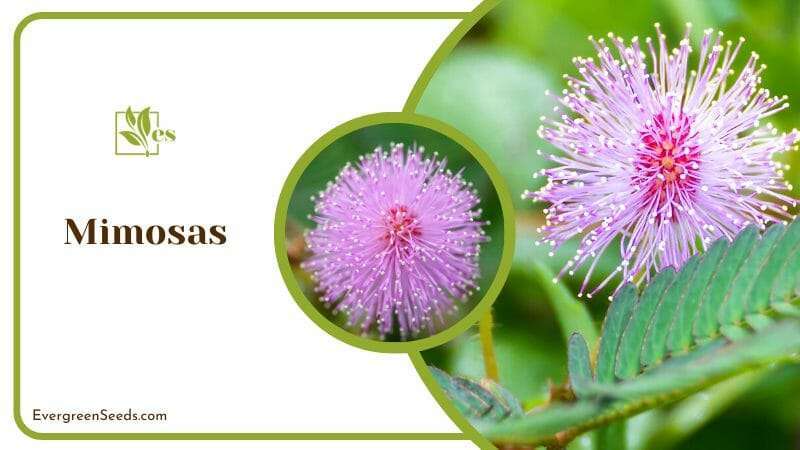
The flowers of mimosas have around ten stamens. What you would see when you observe the flower is a collection of flowers and not an individual flower. Mimosas can tolerate a wide range of soil and temperature, so they are very easy to grow.
16. Buttercups
Ranunculus or buttercups make up a genus of around 600 species of plants in the Ranunculaceae family. These beautiful plants start their bloom in late winter or early spring depending on when they were planted.
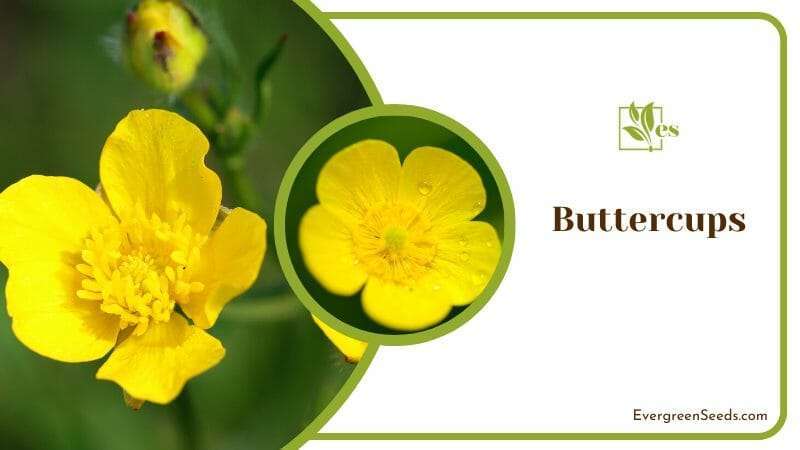
In addition, other names for buttercups include “spearworts” and “water crowfoots.” They are ornamental plants that can grow in aquatic or terrestrial habitats.
Buttercups are perennial plants, but can also grow as annuals or biennials, especially when they grow at the wrong temperature range. Their leaves have petioles, lack stipules, and are palmately veined. Their flowers are hermaphrodites, and have around five sepals, and five petals which are usually yellow.
If you want to grow buttercups, ensure that they grow at 35 to 50 degrees Fahrenheit at night and 60 to 75 degrees Fahrenheit during the day. Their substrate should be moist and nutrient-rich. Note that you do not have to water them in the fall and even protect them from insect larvae.
17. Oleanders
“Oleander” refers to the “Nerium oleander” species which is the only plant in the genus “Nerium” found in the subfamily “Apocynoideae” and family “Apocynaceae.” They are small trees or shrubs that people cultivate worldwide, especially in subtropical and temperate areas as landscaping or ornamental plants.
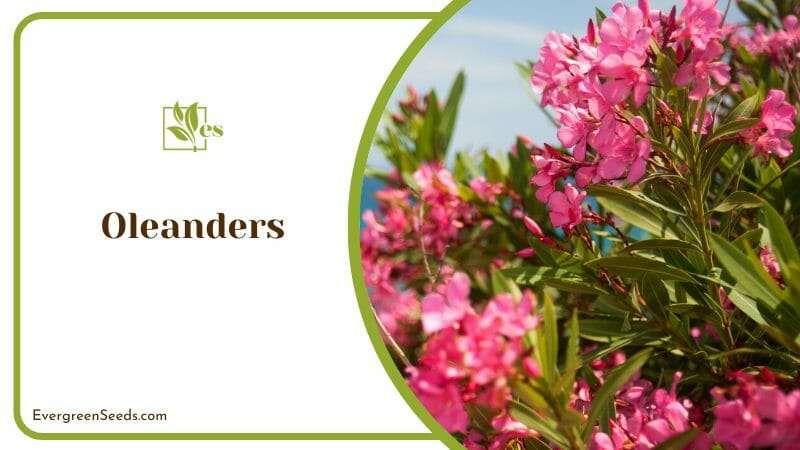
These beautiful plants can grow from seven up to 20 feet tall. Their five-lobed flowers can be white, red, or pink and grow in clusters throughout the year. Their leaves grow in whorls or pairs of three. They are thick and leathery, narrowly lanceolate, dark-green, and can grow two to eight inches tall and 0.3 to 1.3 inches wide.
Note that every part of the plants including their leaves, stems, flowers, roots, and twigs are all toxic, which means neither humans nor animals should consume them.












